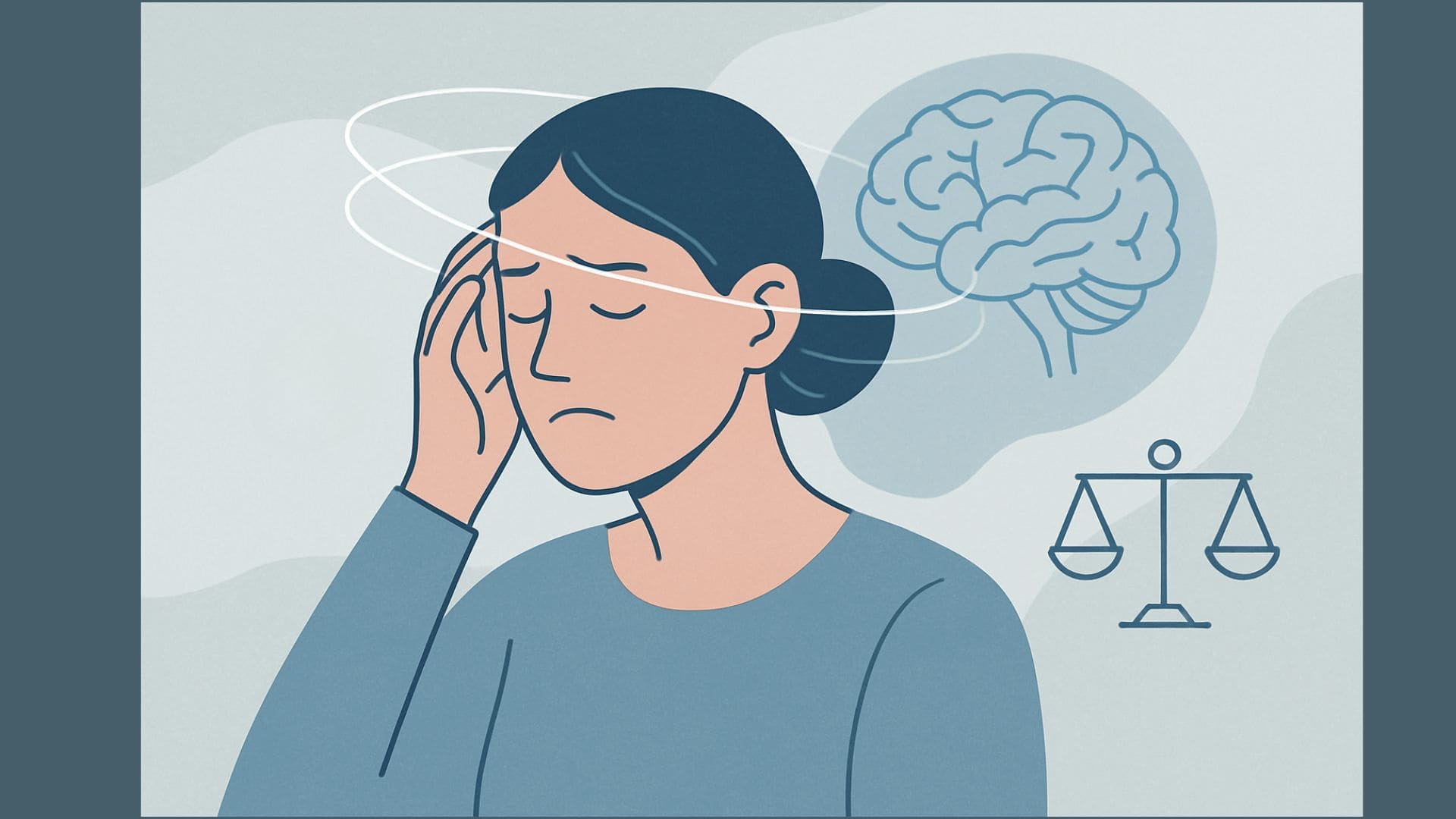For Healthcare Professionals:
The persistent postural-perceptual dizziness (PPPD) often occurs following a peripheral vestibular disorder – but it can persist even after balance function has long since normalized. Affected individuals report ongoing unsteadiness, dizziness during movement, and visually induced symptoms – even though standard examinations are often unremarkable. The role of central processing mechanisms has so far remained unclear.
🔗 Storm R et al., 2025. Functional brain activity in persistent postural-perceptual dizziness (PPPD) during galvanic vestibular stimulation reveals sensitization in the multisensory vestibular cortical network. Scientific Reports
Study design:
- Participants: 28 PPPD patients, 28 age- and sex-matched healthy controls
- Method: Functional magnetic resonance imaging (fMRI) during galvanic vestibular stimulation (GVS)
- Study parameters:
- Perceptual threshold for motion (egomotion)
- Intensity of subjective dizziness perception
- Questionnaires assessing functional limitations due to PPPD (e.g., Dizziness Handicap Inventory)
- Visual motion processing (motion coherence task)
- Postural control (posturographic tests)
Key results
- PPPD patients responded to even very weak vestibular stimuli with a pronounced perception of dizziness.
- Compared to the control group, significantly increased activity was observed in:
- the supramarginal gyrus
- the posterior insula (operculum 3)
- the cerebellar vermis
- The perceived dizziness intensity was stronger in PPPD patients, but not directly correlated with brain activity
- The level of activation in the insula correlated with the degree of functional impairment and postural instability
Clinical Relevance
- The study demonstrates a sensitization of the multisensory vestibular network in PPPD
- The main mechanism is not a peripheral lesion, but a central hyperexcitability
- The pathophysiological mechanisms resemble a sensory–neuronal amplification process
- This explains why even normal stimuli (e.g., motion or visual input) can trigger exaggerated symptoms
Conclusion for Practice
These data confirm: PPPD is a central neurophysiological syndrome – not imagination, and not a primarily psychogenic disorder.
Therapeutic implications:
- Patient education is essential – clear information fosters understanding
- Targeted habituation (visual–vestibular exposure, balance training) can reduce hypersensitivity
- Medications such as SSRIs may be helpful as adjuncts – but are not a primary treatment
👉 Are you interested in a comprehensive further training in vestibular rehabilitation and how PPPD can be reliably diagnosed and treated based on evidence?
Current further education opportunities can be found in the IVRT Course search.
For Patients – Easy to Understand
Why the brain reacts oversensitively to dizziness in PPPD
Das Persistent postural-perceptual dizziness (PPPD) is a condition in which dizziness persists even though the original cause (e.g., an inflammation of the balance organ) has long since resolved.
Many affected individuals feel unsteady, perceive movements as unpleasantly intense, or react sensitively to visual stimuli such as escalators, screen work, or crowds.
📄 Storm R et al., 2025. Functional brain activity in persistent postural-perceptual dizziness (PPPD) during galvanic vestibular stimulation reveals sensitization in the multisensory vestibular cortical network. Scientific Reports.
What does the new study show?
Researchers examined how the brain responds to mild stimuli of the balance system — in people with PPPD and in healthy individuals:
- Even very weak stimuli triggered dizziness in PPPD patients
- Certain brain regions were overactive, such as the insula (responsible for body perception) and the cerebellum (responsible for balance)
- The more dizziness affected daily life, the stronger these brain areas were activated
What does this mean
- Your dizziness is not imagined — it can be measured in the brain
- PPPD means that the brain reacts too sensitively to sensory input
- The good news: the brain can adapt again over time
What helps with PPPD?
- Targeted exercises and balance training
- Training with visual stimuli (e.g., virtual reality, moving patterns)
- Education and strategies to reduce the fear of dizziness
The goal: Your brain gradually becomes less sensitive — and you regain confidence and stability.
🎯 Our IVRT®-certified dizziness and vestibular therapists are specially trained in the treatment of PPPD: IVRT therapist search

